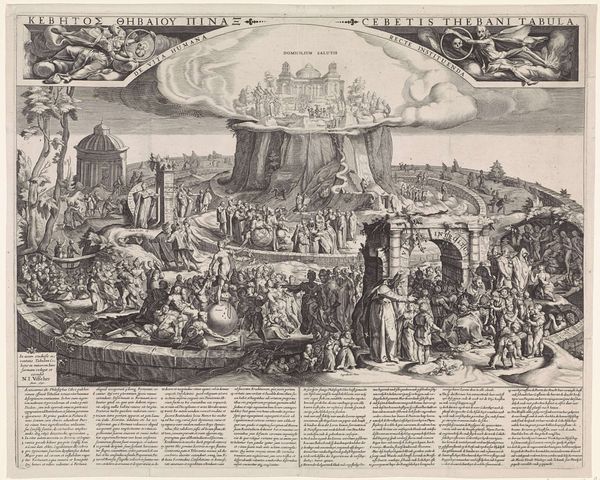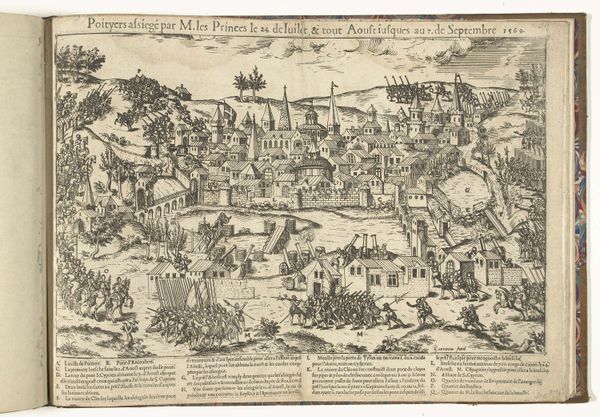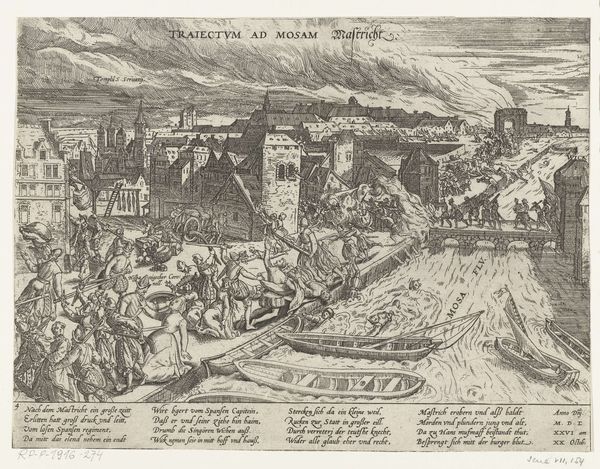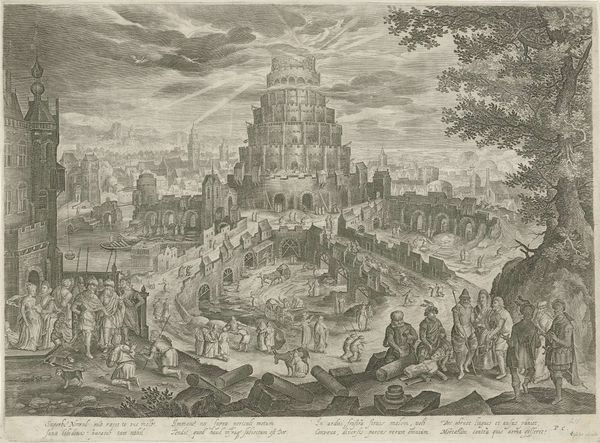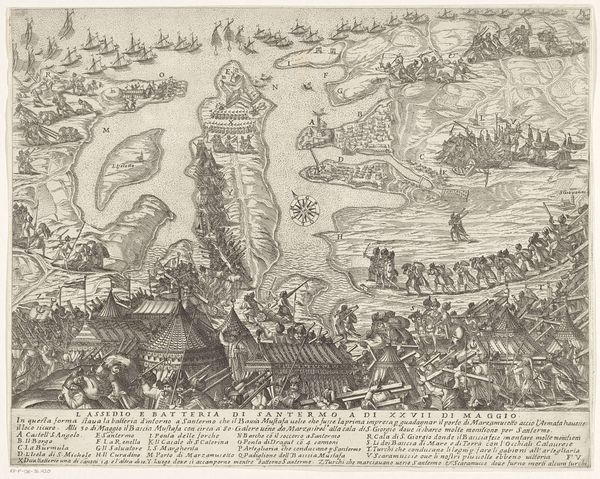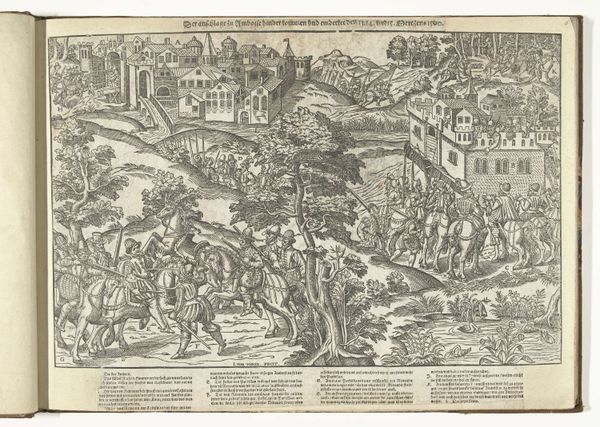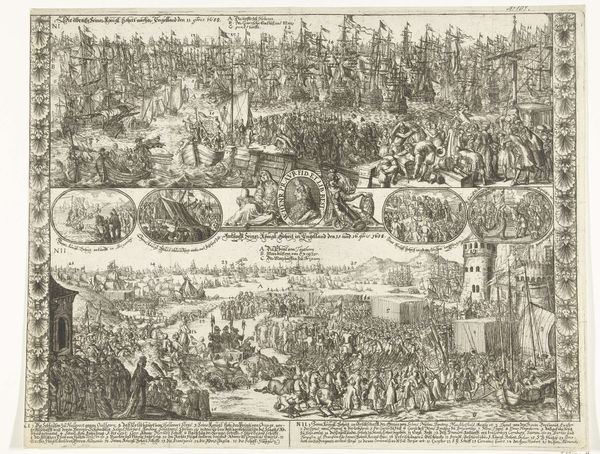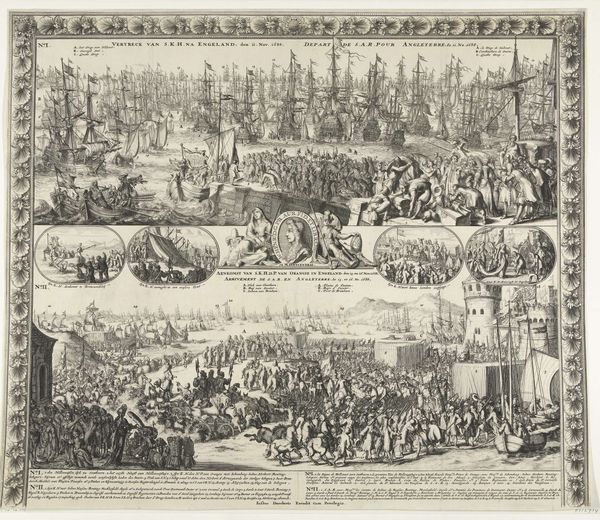
print, engraving
#
allegory
#
baroque
# print
#
figuration
#
line
#
history-painting
#
engraving
Dimensions: height 403 mm, width 505 mm
Copyright: Rijks Museum: Open Domain
Curator: Today we're looking at "Tabula Cebetis," an engraving from 1640 currently housed in the Rijksmuseum. It's attributed to an anonymous artist. Editor: It’s so detailed, almost overwhelming. The scene seems to spiral upwards, drawing my eye to that distant citadel perched on a precarious peak. The sheer density of figures is captivating, but also slightly unsettling. Curator: Absolutely. What you're responding to is a representation of Cebes' Tablet, a philosophical allegory. It essentially maps out the path of human life and the choices one faces. As a print, think about its original context; engravings like these were a form of mass production. How could these philosophical ideas permeate society via a material object? Who purchased this? What did it mean for a person of means to engage with it? Editor: Fascinating. The stark black and white intensifies the allegorical feel. It emphasizes the weighty concepts—morality, virtue—presented here. But look at the sheer precision of the lines. Consider the craftsmanship required to create this complex composition through engraving; each mark matters. The text along the bottom suggests an academic intention. Is it teaching? Critiquing? Curator: Both. The text would provide the contemporary viewer with interpretative clues; think of it as an early form of social commentary using accessible prints for dissemination. Considering its place and time, it also speaks to how social structures influence interpretation and that in turn shapes the cultural landscape, with people engaging and interpreting philosophical concepts. Editor: That certainly casts the artwork in a new light, one that allows viewers to ponder our individual position relative to culture. It encourages a personal reevaluation in light of societal systems of governance. Curator: Indeed, reflecting on the interplay of societal governance structures can spark vital conversations within those cultural landscapes. Editor: The intricate design draws you in. One wonders about the degree of impact or even engagement people felt through this. Curator: A final, important element worth consideration is how accessible printed forms of philosophy created new forms of audience beyond those traditionally associated with philosophical works.
Comments
No comments
Be the first to comment and join the conversation on the ultimate creative platform.
